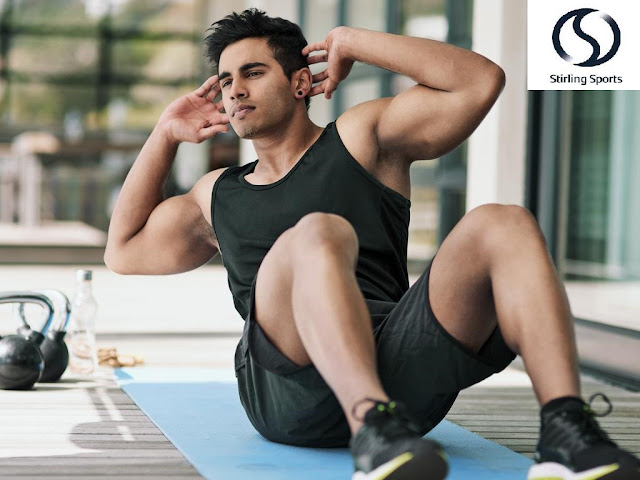The Impact of Crocs Clogs on Your Health
- Get link
- X
- Other Apps
In recent years, Crocs clogs have become a popular footwear choice due to their unique design, vibrant colors, and reputation for comfort. While their aesthetic and functional appeal is undeniable, it’s essential to delve deeper into their health impacts. This blog will explore both the positive and negative aspects of wearing Crocs clogs, supported by scientific research and expert opinions.
A Brief History of Crocs
Crocs were initially introduced in 2002 as a boating shoe. The founders, Lyndon "Duke" Hanson and George Boedecker Jr., wanted to create a shoe that was lightweight, comfortable, and suitable for various outdoor activities. The unique material, Croslite, provided a perfect blend of comfort and durability, which quickly garnered attention. Over the years, Crocs have evolved from a niche product into a mainstream fashion staple.
The Ergonomic Design of Crocs
One of the main selling points of Crocs is their ergonomic design. The Croslite material molds to the shape of the wearer’s feet, providing a customized fit. This can be particularly beneficial for people with foot conditions such as plantar fasciitis or bunions. The wide toe box allows toes to spread naturally, reducing the risk of developing blisters and corns. Additionally, the arch support provided by Crocs can help alleviate pain for those with flat feet or high arches.
Benefits of Wearing Crocs
1. Comfort and Pain Relief
Crocs are renowned for their comfort. The cushioned sole and arch support make them an excellent choice for individuals who spend long hours on their feet. Healthcare professionals, in particular, have embraced Crocs for their ability to reduce foot pain during long shifts. The American Podiatric Medical Association (APMA) has even recognized some Crocs styles with their Seal of Acceptance, indicating they are beneficial for foot health.
2. Hygienic and Easy to Clean
Crocs are made from a non-porous material that resists bacteria and fungi growth. This makes them a hygienic option for environments where cleanliness is paramount, such as hospitals and kitchens. They can be easily cleaned with soap and water, ensuring that they remain fresh and odor-free.
3. Lightweight and Breathable
The lightweight nature of Crocs makes them easy to wear for extended periods. The ventilation holes enhance breathability, keeping feet cool and reducing the risk of fungal infections. This feature is particularly advantageous in hot and humid climates.
Potential Drawbacks of Crocs
1. Lack of Adequate Support for High-Impact Activities
While Crocs provide excellent support for everyday wear, they are not designed for high-impact activities. Running, jumping, and other strenuous activities can strain the feet and ankles due to the lack of lateral support. For these activities, it is advisable to wear shoes specifically designed for sports.
2. Risk of Tripping and Falling
The loose fit and open back design of some Crocs models can increase the risk of tripping and falling. This is particularly concerning for young children and older adults. Ensuring that the clogs fit properly and opting for models with a heel strap can mitigate this risk.
3. Potential for Overuse
Like any footwear, overuse of Crocs can lead to problems. Wearing them exclusively without alternating with other supportive shoes can cause muscle imbalances and strain. It is essential to give your feet a break and switch to different types of footwear periodically.
Expert Opinions
Podiatrists have mixed opinions about Crocs. Dr. Megan Leahy, a Chicago-based podiatrist, acknowledges that Crocs can be beneficial for short-term wear but cautions against using them as a primary shoe for prolonged periods. Dr. Alex Kor, a spokesperson for the American Academy of Podiatric Sports Medicine, suggests that while Crocs can be suitable for people with specific foot conditions, they should not replace more supportive footwear for activities requiring additional stability.
Tips for Choosing the Right Crocs
- Opt for Styles with Heel Straps: For better stability and support, choose Crocs models with heel straps to keep your feet secure.
- Ensure Proper Fit: Make sure the Crocs fit well, without excessive looseness or tightness.
- Alternate Footwear: Do not rely solely on Crocs. Alternate with other supportive shoes to maintain overall foot health.
- Consider Orthotic Inserts: If you require additional support, consider using orthotic inserts with your Crocs.
Conclusion
Crocs clogs offer a blend of comfort, convenience, and style, making them a popular choice for various settings. Their ergonomic design and ease of cleaning make them particularly suitable for individuals in healthcare and hospitality. However, it is crucial to be aware of their limitations and potential drawbacks. By choosing the right style, ensuring a proper fit, and alternating with other supportive footwear, you can enjoy the benefits of Crocs while minimizing any adverse health impacts. As with any footwear, moderation and mindful usage are key to maintaining optimal foot health.
In conclusion, while Crocs clogs have revolutionized the world of comfortable footwear, a balanced approach to their use will ensure that your feet remain healthy and pain-free.
- Get link
- X
- Other Apps




Comments
Post a Comment